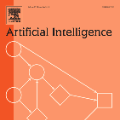LLMs demand significant computational resources for both pre-training and fine-tuning, requiring distributed computing capabilities due to their large model sizes \cite{sastry2024computing}. Their complex architecture poses challenges throughout the entire AI lifecycle, from data collection to deployment and monitoring \cite{OECD_AIlifecycle}. Addressing critical AI system challenges, such as explainability, corrigibility, interpretability, and hallucination, necessitates a systematic methodology and rigorous benchmarking \cite{guldimann2024complai}. To effectively improve AI systems, we must precisely identify systemic vulnerabilities through quantitative evaluation, bolstering system trustworthiness. The enactment of the EU AI Act \cite{EUAIAct} by the European Parliament on March 13, 2024, establishing the first comprehensive EU-wide requirements for the development, deployment, and use of AI systems, further underscores the importance of tools and methodologies such as Z-Inspection. It highlights the need to enrich this methodology with practical benchmarks to effectively address the technical challenges posed by AI systems. To this end, we have launched a project that is part of the AI Safety Bulgaria initiatives \cite{AI_Safety_Bulgaria}, aimed at collecting and categorizing AI benchmarks. This will enable practitioners to identify and utilize these benchmarks throughout the AI system lifecycle.
翻译:暂无翻译




